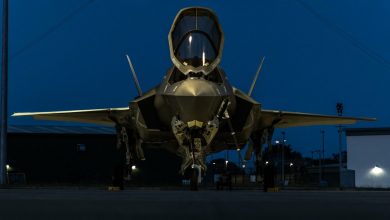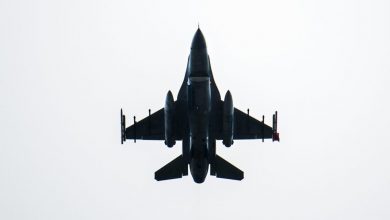Türkiye’s defense spending more than doubles over last decade

Türkiye’s military expenditures saw a sharp increase in 2024, as the global spending registered the steepest year-over-year rise since at least the end of the Cold War, according to a report released by a leading conflict think tank.
Inflation-adjusted spending last year rose by 9.4% to $2.72 trillion, the Stockholm International Peace Research Institute (SIPRI) said, marking a 10th consecutive annual growth. Per capita military spending also hit its highest point since 1990, reaching $334.
The rise was fueled by heightened geopolitical tensions that increased military spending in all world regions, with particularly rapid growth in both Europe and the Middle East.
SIPRI’s findings showed Türkiye’s defense spending rose 12% in 2024 from the previous year, reaching $25 billion, or 1.9% of gross domestic product (GDP).
The country accounted for 1% of global spending last year. Its military expenditures have surged by 110% since 2015, the think tank said.
Türkiye has injected billions of dollars over the past two decades, which has helped it transform from a nation heavily reliant on equipment from abroad to one that is a major exporter and where homegrown systems now meet almost all of its defense industry needs.
The investment drive prompted the development of a range of homegrown air, land and marine platforms, which eventually helped Türkiye seal billions of dollars worth of export deals.
“Over 100 countries around the world raised their military spending in 2024,” SIPRI said.
“As governments increasingly prioritize military security, often at the expense of other budget areas, the economic and social trade-offs could have significant effects on societies for years to come,” it said.
The global military burden – military spending as a share of global GDP – climbed to 2.5% in 2024.
Europe major driver
The war in Ukraine and doubts over U.S. commitment to the NATO alliance saw military spending in Europe (including Russia) rise by 17% to $693 billion, pushing European military spending beyond the level recorded at the end of the Cold War.
All European countries increased their expenditure in 2024, except Malta, the data showed.
Russia’s military expenditure reached an estimated $149 billion in 2024, a 38% increase from 2023 and double the level in 2015. This represented 7.1% of Russia’s GDP and 19% of all government spending.
Ukraine’s total military expenditure grew by 2.9% to reach $64.7 billion, which amounts to 43% of Russia’s spending. At 34% of GDP, Ukraine had the largest military burden of any country in 2024.
“Ukraine currently allocates all of its tax revenues to its military,” SIPRI said. “In such a tight fiscal space, it will be challenging for Ukraine to keep increasing its military spending.”
The top five military spenders – the United States, China, Russia, Germany and India – accounted for 60% of the global total.
Spending by the U.S. rose by 5.7% to reach $997 billion, which was 66% of total NATO spending and 37% of world military spending in 2024.
Germany’s expenditure increased by 28% to reach $88.5 billion, making it the fourth biggest spender in the world.
For the first time since reunification, Germany became the biggest military spender in Western Europe, SIPRI researcher Lorenzo Scarazzato said.
“The latest policies adopted in Germany and many other European countries suggest that Europe has entered a period of high and increasing military spending that is likely to continue for the foreseeable future,” Scarazzato noted.
China, the world’s second-largest military spender, increased its expenditure by 7% to an estimated $314 billion, marking three decades of consecutive growth.
‘Complex’ tasks
Total military spending by NATO members amounted to about $1.5 trillion, SIPRI said. All 32 NATO members increased their spending in 2024, with 18 spending at least 2% of GDP.
European NATO members spent $454 billion in total, representing 30% of total spending across the alliance.
The increase among European NATO members was driven primarily by the ongoing Russian threat and concerns about possible U.S. disengagement within the alliance, according to SIPRI researcher Jade Guiberteau Ricard.
“It is worth saying that boosting spending alone will not necessarily translate into significantly greater military capability or independence from the U.S. Those are far more complex tasks,” Ricard said.
Military expenditure in the Middle East reached an estimated $243 billion in 2024, an increase of 15% from 2023, SIPRI said.
Israel’s expenditure surged by 65% to $46.5 billion – the sharpest rise since 1967 – amid its genocidal war in Gaza, in which it has killed more than 52,200 Palestinians, and escalated conflict with Hezbollah in Lebanon.
Lebanon’s spending rose by 58% to $635 million, after several years of lower spending due to economic crisis and political turmoil.
However, Iran’s expenditure fell by 10% in real terms to $7.9 billion as the impact of sanctions limited its capacity to increase spending.
African countries spent $52.1 billion for military purposes in 2024, a 3% increase from 2023 and 11% higher than in 2015.
Source: Daişy Sabah





